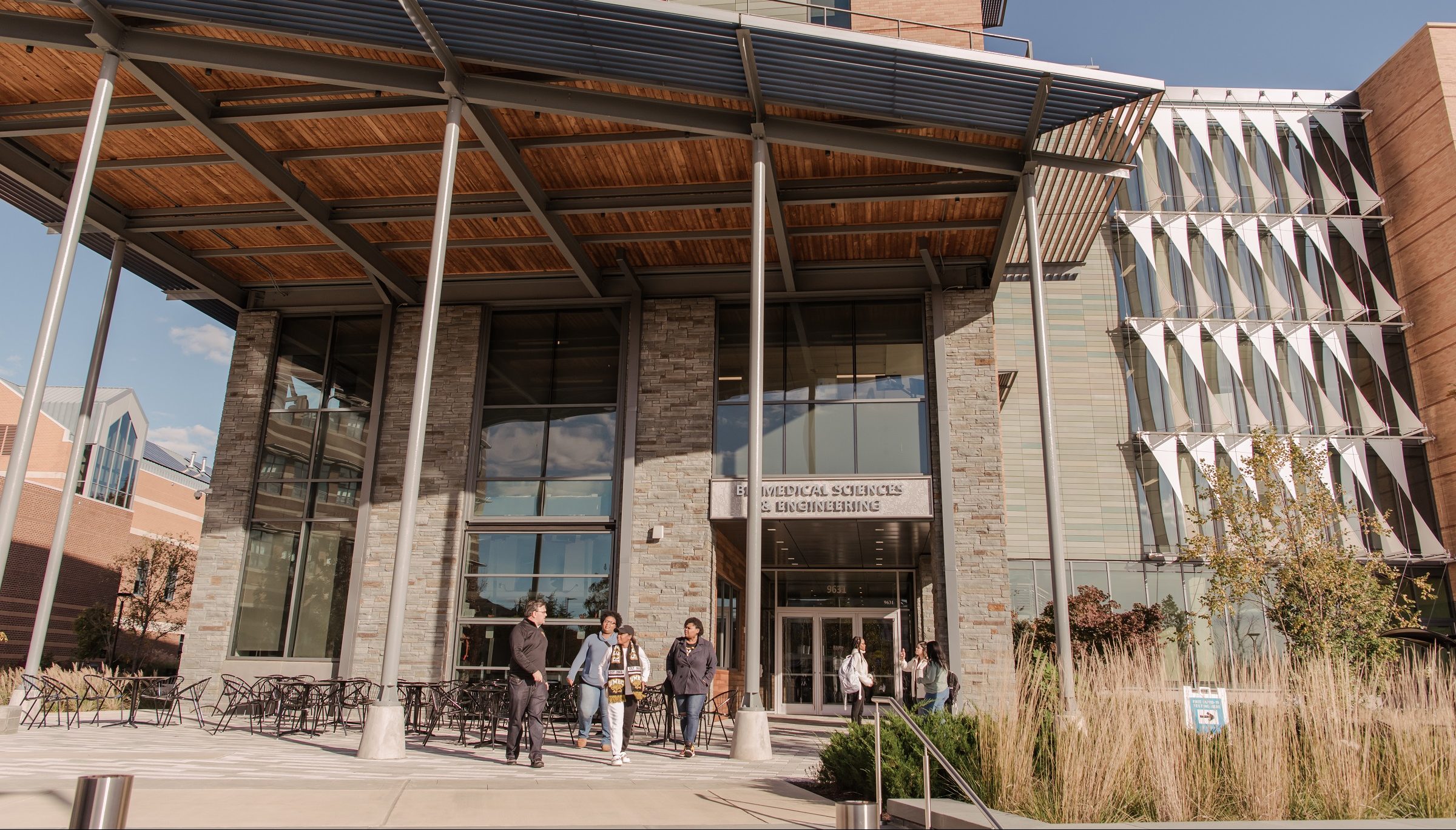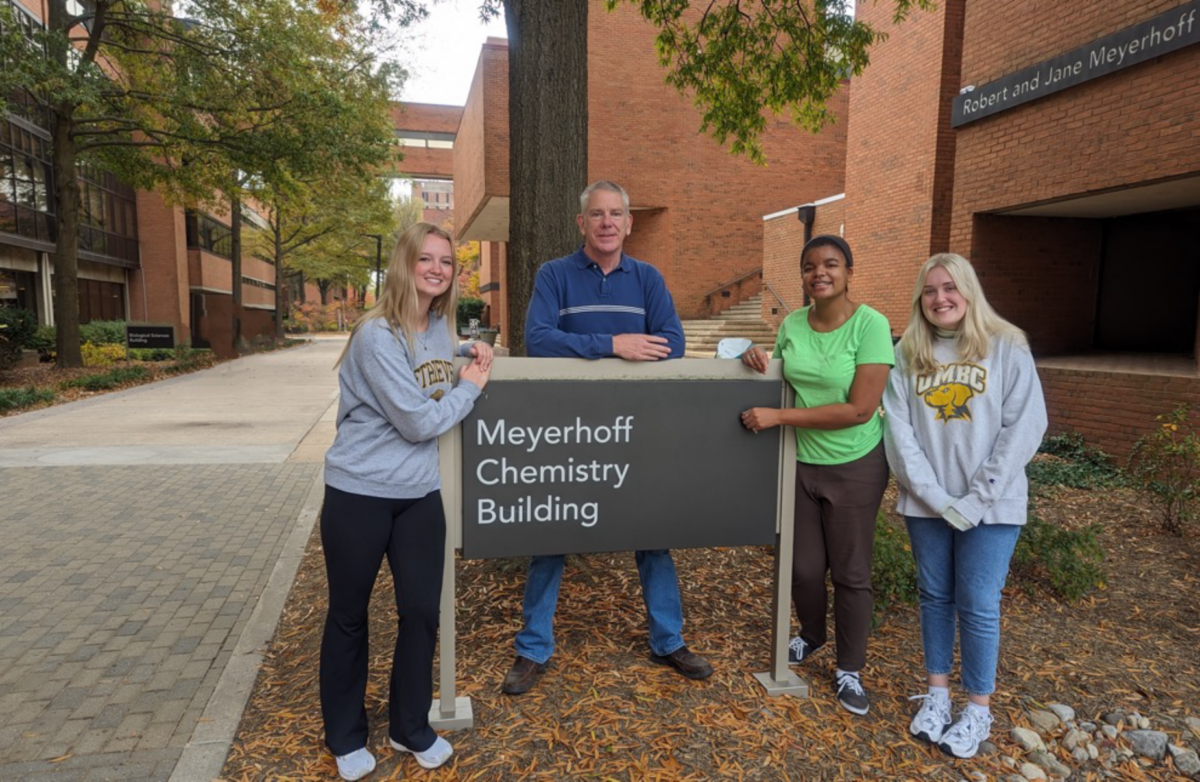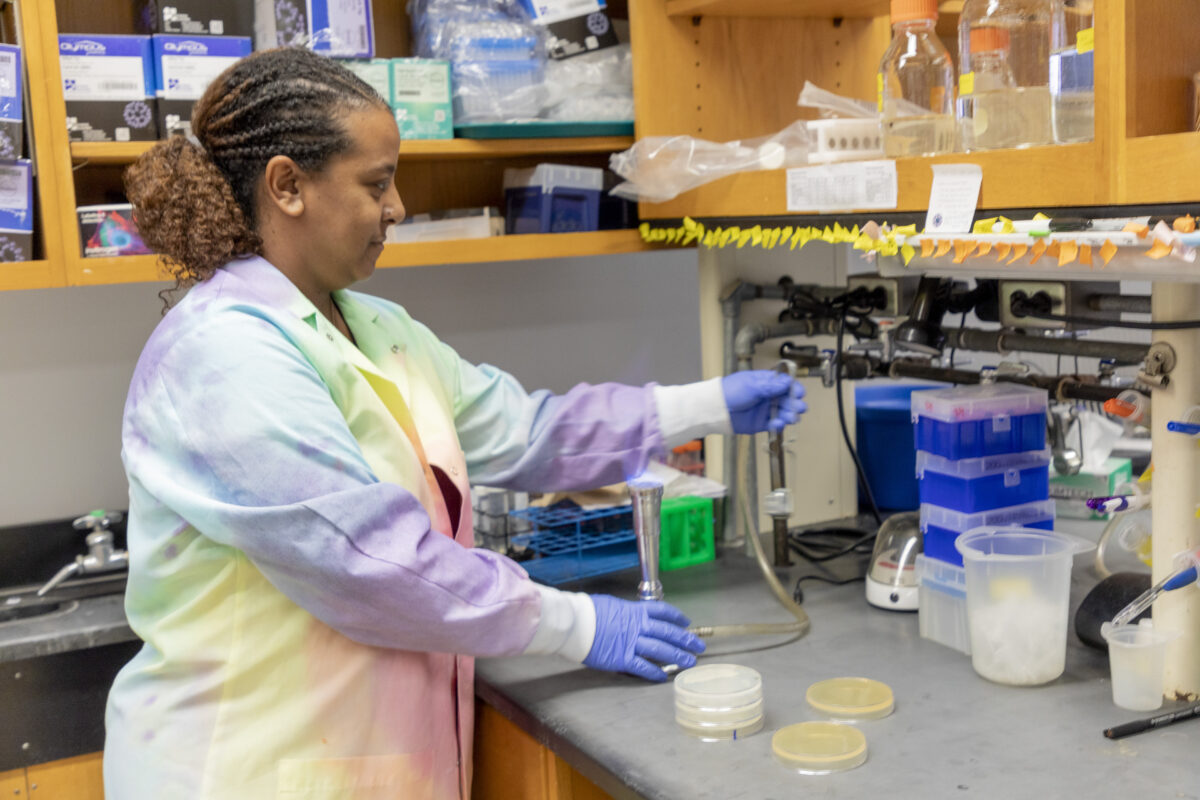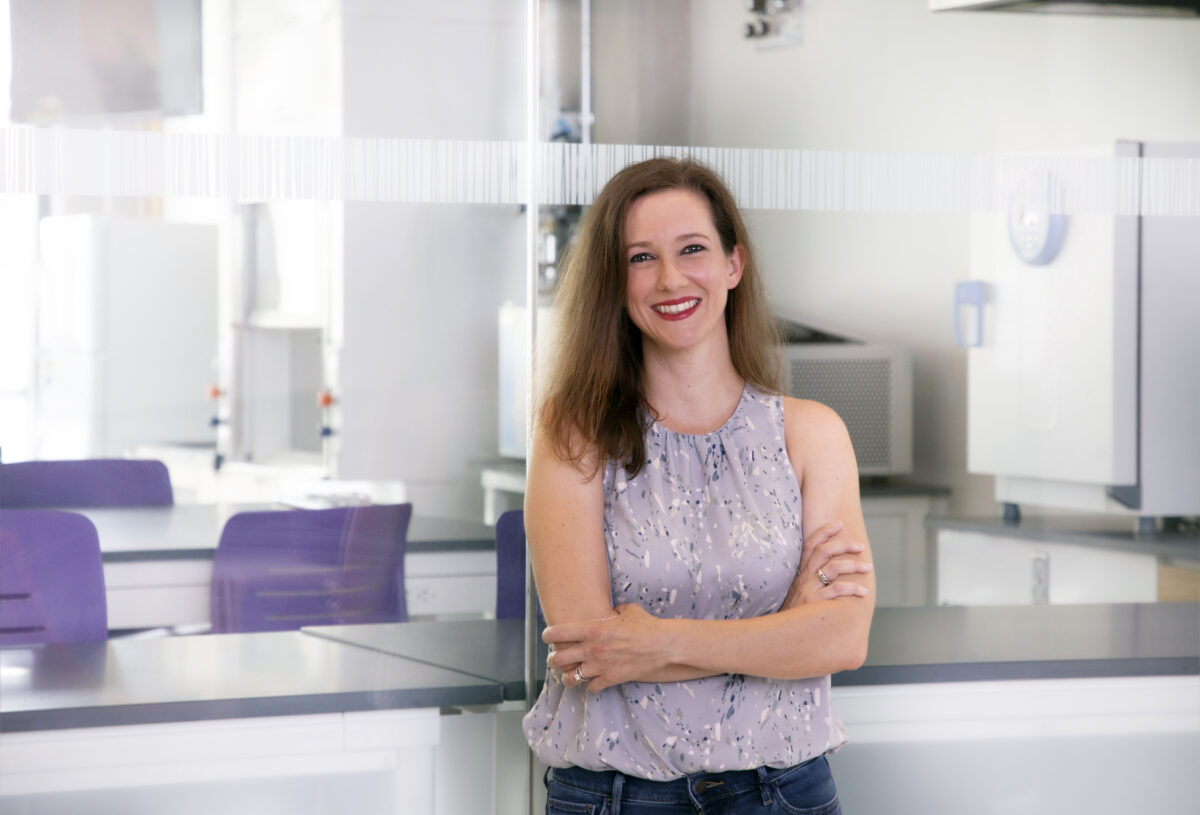UMBC has received a $900,000 grant from the National Institute for Innovation in Manufacturing Biopharmaceuticals (NIIMBL) to develop and implement a new, short-term biomanufacturing training program. Four universities, all classified as minority-serving institutions (MSIs), received funding for similar programs, designed to meet critical national workforce needs.
UMBC will offer the biomanufacturing training program at its Universities at Shady Grove (USG) campus in Rockville, Maryland. The program will be adapted from a curriculum first developed at Texas A&M University. Annica Wayman ’99, M6, mechanical engineering, associate dean for Shady Grove affairs in CNMS, and co-lead Manik Ghosh, assistant director of the Translational Life Science Technology (TLST) laboratories at UMBC, will travel to Texas for training on the curriculum and will then work together to adapt it for UMBC. The anticipated training launch is late summer or fall 2023.
“This new program is really the next wave of UMBC expanding our training offerings,” Wayman says. “This kind of short-term programming could enhance our courses as well, to help with educating people in biomanufacturing and strengthening that workforce where there’s a huge gap.”
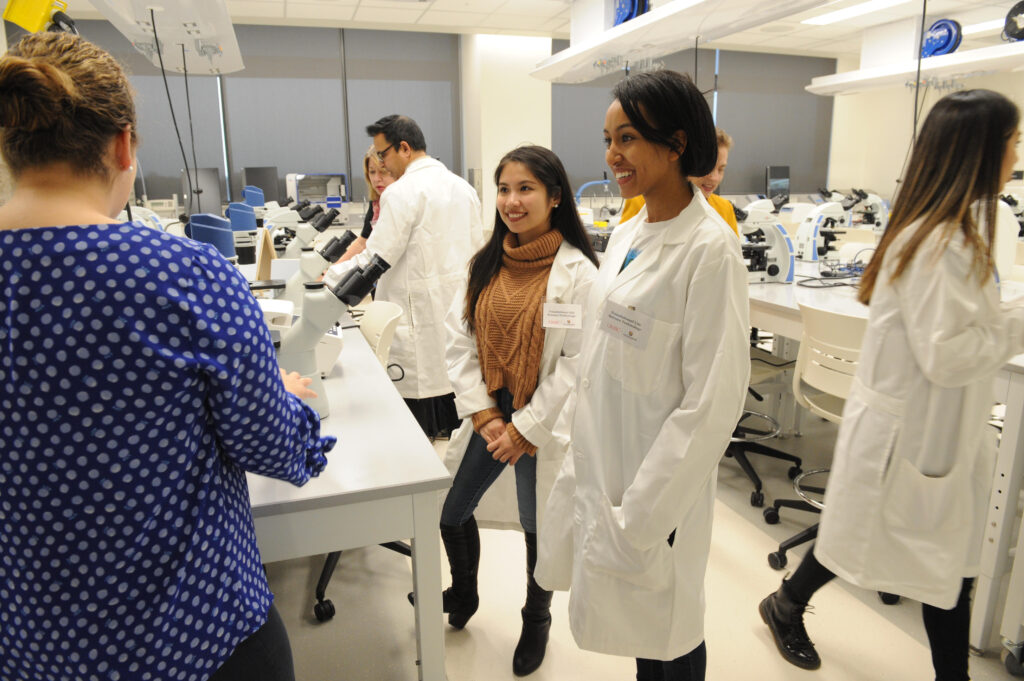
Snowball effect
The gap between supply and demand for skilled workers in biotech is very real, and it’s only growing in the BioHealth Capital Region. This region, which includes Maryland, Washington D.C., and Virginia, ranks #4 among the top biopharma clusters in the country. The pandemic has further expanded the biopharma industry, so the need for qualified local workers in a range of biotech roles has never been greater.
The new biomanufacturing program is a natural outgrowth of previous work by Wayman, Ghosh, and colleagues. The structure of the program will be similar to UMBC’s award-winning Biotech Boot Camp, which trained people who had lost their jobs during the pandemic for new careers in biotech. The boot camp has run twice so far, both times focusing on cell culture techniques and broader “wet lab” skills. Both times, the Montgomery County government and WorkSource Montgomery partnered with UMBC to offer the boot camps at no cost to the students.
The original boot camp was made possible by UMBC’s TLST bachelor’s degree program, fully launched in 2019 in partnership with Montgomery College. TLST was the college’s first new major developed in response to the growing need for biotech workforce development in the region. The TLST program bridges fundamental knowledge in the life sciences with industry-specific applications, practical laboratory skills, and an understanding of the regulatory process for biopharmaceuticals.
“The launch of the TLST program has led to a lot of education and partnership opportunities,” Wayman says. “It’s allowed UMBC to address gaps in the workforce that already existed, and that became even more prominent with the pandemic. We jumped in to help to fill those gaps in a variety of ways. TLST was the impetus and the start of that, and it snowballed from there.”

Short program, lasting impact
Even a short-term training program can have a huge impact on an individual’s career trajectory. A general biomanufacturing program could be the start of a career in fields as diverse as bench research, regulatory affairs, and biomanufacturing process design. These careers work toward answering big questions like, “How do we know this product is safe for use in the human body?” or, “How can we make this sequence of steps more efficient by taking advantage of new technologies?”
Roles in all these areas will be important to fill in the near future, and continuously asking the big questions as technologies emerge, regulations shift, and new scientific knowledge comes to light will help move the industry forward safely and reliably, Wayman notes. Programs like the new biomanufacturing training, the biotech boot camp, TLST, and more at UMBC have the potential to send thousands of well-prepared students into the biotech workforce.
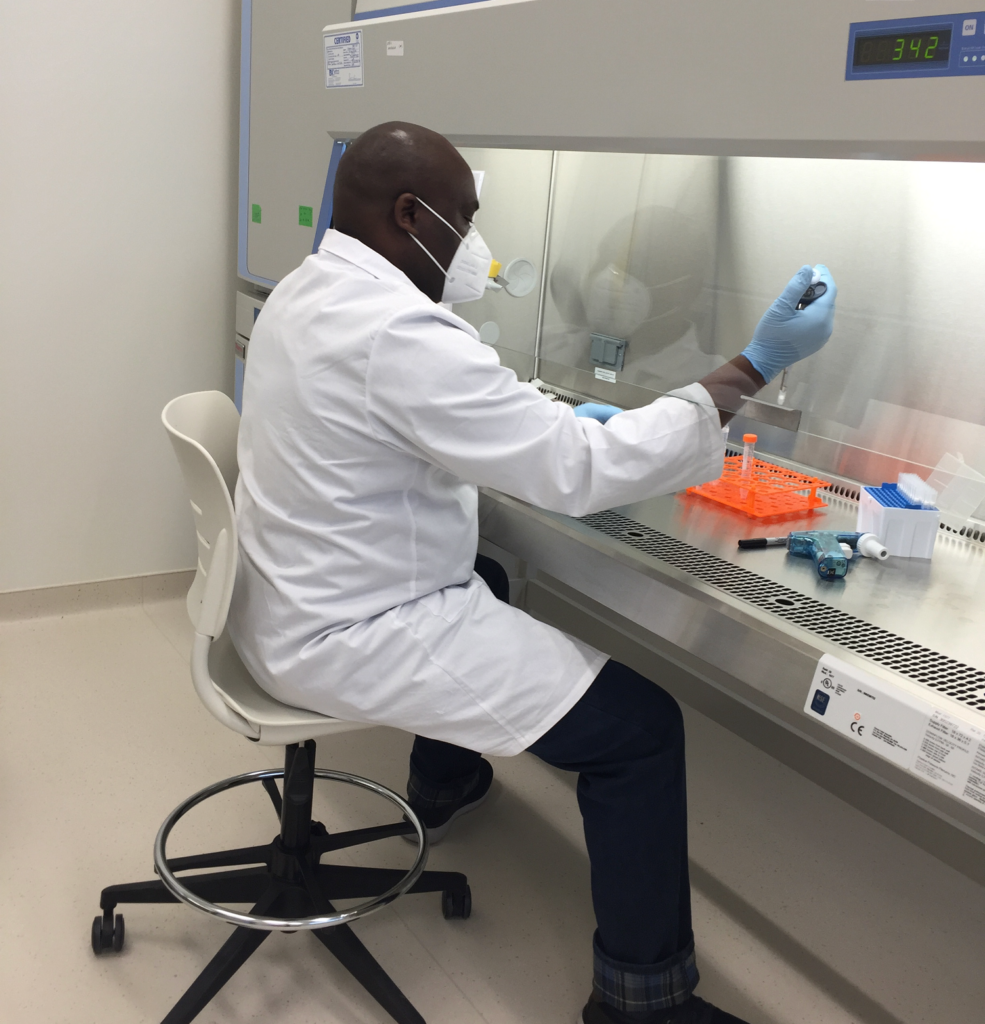
Looking ahead
Antonio Moreira, vice provost for academic affairs, has seen the potential for Maryland to be a biotechnology leader for years, and has championed UMBC’s efforts to grow opportunities in related fields. “As a component of the Maryland biotechnology ecosystem, UMBC is a major resource for preparing the workforce needed to develop and manufacture critical therapies,” Moreira explains. “Given a shortage in this workforce, graduating students need to be prepared to hit the ground running as they join these biotechnology companies.”
Bill LaCourse, dean of the College of Natural and Mathematical Sciences (CNMS) at UMBC, agrees. “At UMBC, we are driven by the vision that Maryland will continue to grow as a leader in biotech,” he says. “We’re establishing strong pathways to develop the workforce, where students and professionals have an array of choices about how to get to the biotech career they want and that the region needs.”
Wayman leads much of the day-to-day operations of UMBC’s biotech programs. Even while planning next steps, she tries to remind herself how much progress she and her team have already made toward narrowing the workforce gap and setting a new group of students on a path to success.
“When I take a step back, I see how amazing it is that we achieved all this through a pandemic,” she says. And then she, too, looks forward. “But there’s just so much more to do.”
This article describes work performed under a Project Award Agreement from the National Institute for Innovation in Manufacturing Biopharmaceuticals (NIIMBL) and financial assistance award 70NANB21H085 from the U.S. Department of Commerce, National Institute of Standards and Technology.
Header image: The Biomedical Sciences and Engineering Building at The Universities at Shady Grove. TLST courses, the Biotech Boot Camp, and the new biomanufacturing training program all happen here. Photo by Marlayna Demond ’11 for UMBC.
Tags: CNMS, ShadyGrove, TLST

